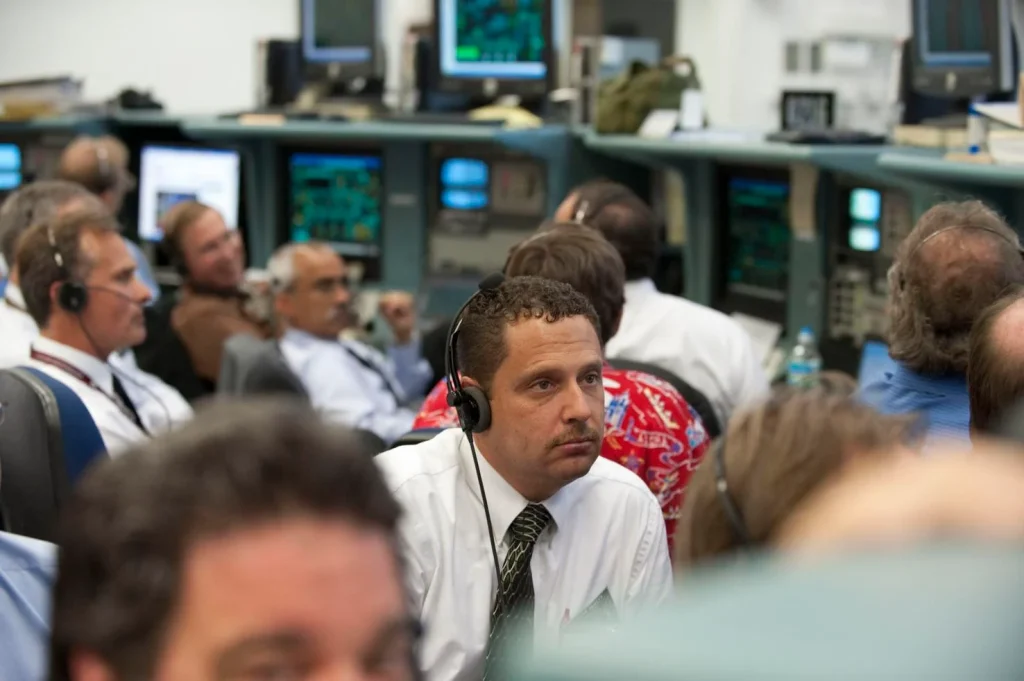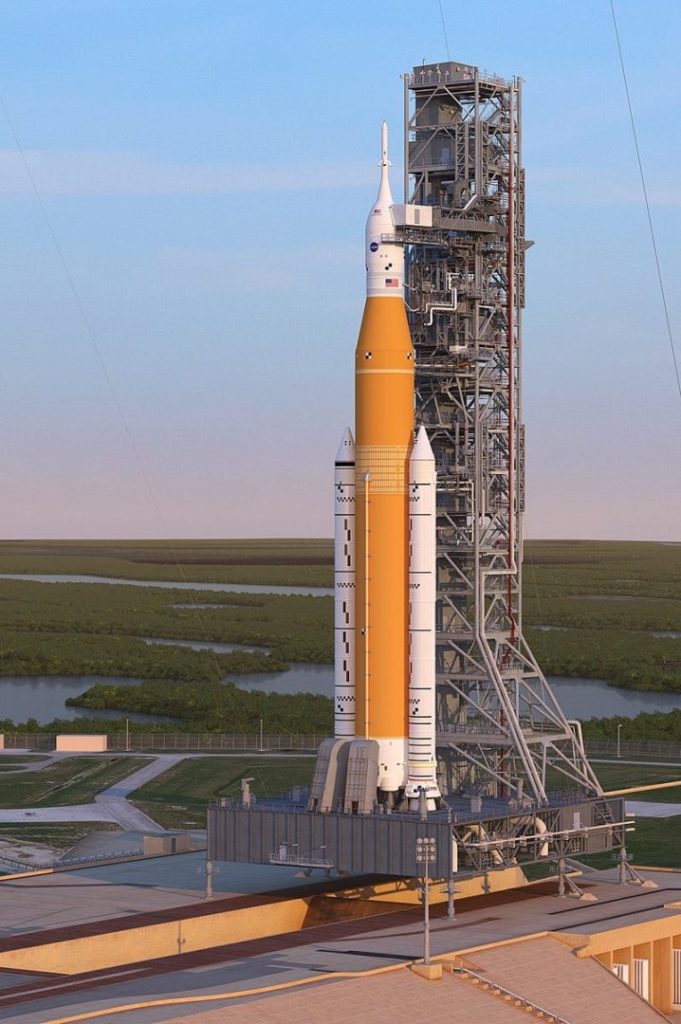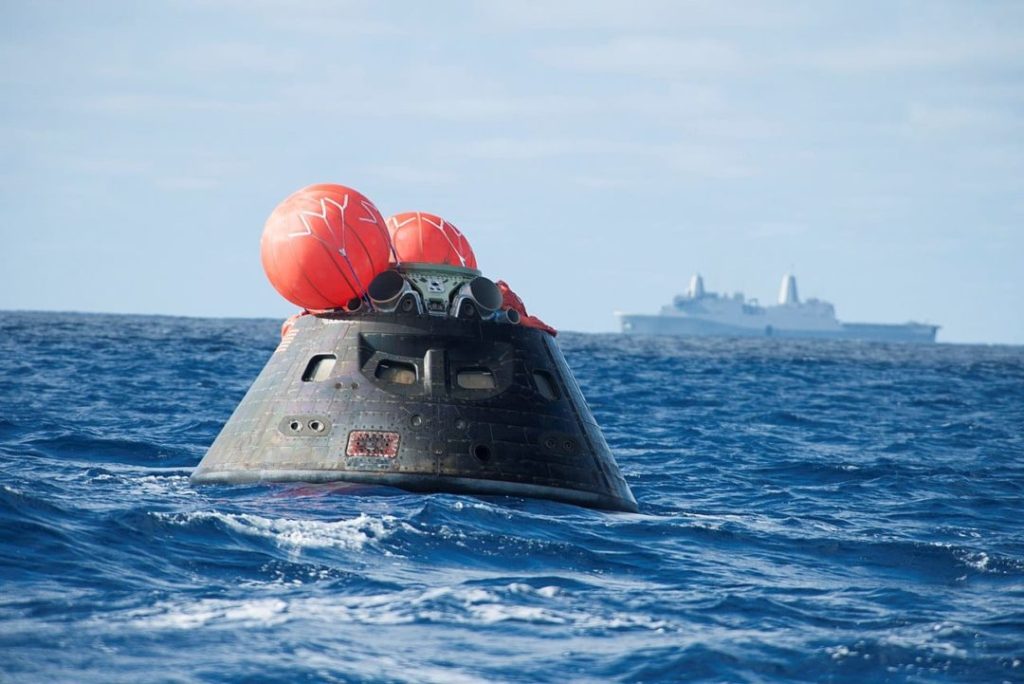Include a Topper!
-
Happy Birthday Banner
$9.00 -
Jack-o’-Lantern Cake Topper
$10.00
Add Ons
Your cart is currently empty!
Since 1949 celebrating 75 years. Order online or call us at 1 800 GAMBINO (426-2466)



Humans are heading back to the Moon. The Artemis space program is in full-swing with a moon landing scheduled for 2027. But this time, the plan isn’t to stop there. NASA aims to use what is learned during this and subsequent missions to help humans land on Mars for the first time, as well.
America’s successes in space have required the combined effort of hundreds of thousands of U.S. citizens, as well as countless international partners. But what most people don’t realize is just how much of that work has been done—and continues to be done—by New Orleanians.
NASA’s Michoud Assembly Facility has a long and important history. The factory, in New Orleans East, built seacraft and aircraft during World War II, tanks during the Korean War, and then constructed essential equipment for America’s space program beginning in the 1960s. That equipment includes the extraordinary Saturn V rocket.
We covered much of this early work in Part 1 of this series. But that was just the beginning. NASA’s Michoud Assembly Facility had a large role still left to play.
![The first Space Shuttle External Tank rolls off the assembly line on September 9, 1977 at the Michoud Assembly Facility in New Orleans. Courtesy of NASA.]](https://gambinos.com/wp-content/uploads/Photo-1-2-2-1024x709.jpg)
Space Shuttle Program
The Apollo program concluded in 1975 after 11 missions and six moon landings. None of that would have been possible without the Michoud-built Saturn V rocket.
But, even though Apollo ended, New Orleans’ role in space exploration did not. From 1981 to 2011, NASA’s focus shifted to the Space Shuttle program, which hoped to establish routine transportation for Earth-to-orbit crew and cargo with spacecraft that could be reused from mission to mission. The most impressive feat of this error was building a permanent space station to orbit Earth, today known as the International Space Station.
There are only a few plants in the world with the capacity to do this kind of work. At a quarter-mile long, hardware such as the Saturn V rocket or the Space Shuttle’s external tanks could be moved from one end of the plant to the other without having to be put down and reloaded. This unparalleled capacity is how NASA’s Michoud Assembly Facility eventually earned the nickname, “America’s Rocket Factory.”
The amount of space at Michoud is just one of its major advantages. A second is its proximity to deep, navigable water.
Rockets this large can’t be transported on highways. Rather, they must be loaded on a barge to travel over water to sites such as the John C. Stennis Space Center in Mississippi or the Kennedy Space Center in Florida.
If the Intercoastal Waterway hadn’t been built where Michoud now stands, allowing for faster travel into the Gulf of Mexico, then NASA likely wouldn’t have built a factory here.
Tragic Setbacks
The Space Shuttle program ultimately achieved the objective of building the space station and creating reusable rocket boosters and crewed space vehicles. There were, however, devastating setbacks along the way.
On Feb. 1, 2003, the Space Shuttle Columbia broke up as it returned through Earth’s atmosphere, killing the seven astronauts on board. NASA suspended Space Shuttle flights to investigate the disaster, and it was determined that, during liftoff, insulating foam fell from the external tank built at Michoud and caused damage to Columbia’s heat shield. MAF engineers were initially told their improper installation of the foam contributed to the failure.
“That was a really tough time,” says Jeffrey Pilet, a program management director for Lockheed Martin which was also housed at Michoud. “The program was halted, the investigation went on for a very long time, and seven astronauts were dead.”
Workers at Michoud toiled through difficult adjustments, and on July 26, 2005—almost two-and-a-half years after the Columbia disaster—the Space Shuttle Discovery flew the “Return to Flight” mission. While this mission was a success, the external tank once again frustratingly shed some of its foam.
The program was again grounded for examination, but an additional challenge was on the way. One month after Discovery’s launch, Hurricane Katrina hit the Gulf Coast.

Former director of NASA’s Michoud Assembly Facility, Robert Champion says that is when Michoud’s third and final major advantage shined through.
“If the flood pumps at Michoud stopped working, we were going to lose the Space Shuttle program,” he says, explaining that flooding would have destroyed the factory and crippled their ability to make external tanks. “But instead of evacuating, 38 New Orleans NASA employees stayed behind and kept the pump station operating.
“It’s not just that our workers have decades of experience building the world’s most powerful rockets,” he says. “They also believe in their work so deeply. They desperately want their mission to succeed.”
Those women and men braved 130 mph winds, as well as waves that topped the 19-foot levee, to pump a total of more than one billion gallons of water out of the facility.
“Their courage reminds us that not all of NASA’s heroes fly in space,” NASA administrator Michael Griffin said when he presented those Louisianians with the agency’s Exceptional Bravery Medal.
Michoud reported that Katrina left 94% of their employees with damaged or destroyed homes, but workers pushed to make necessary improvements to the Space Shuttle program. (It was later discovered that the Discovery and Columbia foam loss was not a result of faulty installation, and an apology was issued to Michoud’s workers.)
The Space Shuttle program returned to flight the following July 4.
“It might be the proudest I’ve ever been,” says Matt Wallo from Lakeview, who is now a senior manager with Lockheed Martin at MAF. “Working through all those issues and then watching that shuttle take off from Florida on the Fourth of July… that was special.”
To the Moon and Beyond!
Today, NASA has taken on its most ambitious program yet. It’s called Artemis—named after the Greek goddess of the moon, and the twin sister of Apollo.
But this is no Apollo replica.
The program has already begun as NASA assigned specific private companies the task of transporting equipment to the lunar surface for scientific exploration and to prepare the Moon’s South Pole (where water was discovered) for sustained human presence.
Artemis I launched last year, when NASA’s new rocket—called the Space Launch System (SLS) and the most powerful rocket in the history of spaceflight—launched carrying the Orion Multi-Purpose Crew Vehicle, the project’s new spacecraft. This successful unmanned mission sent Orion into a 10-day orbit around the Moon before returning to Earth. The SLS rocket and Orion spacecraft will be used throughout all of Artemis.

And, of course, major components of both the SLS rocket and Orion are being built at America’s Rocket Factory in New Orleans.
The largest piece of the 320-foot SLS rocket—the 212-foot long component known as the Core Stage—is being built at Michoud. It not only holds the fuel required to launch a rocket with 8.4 million pounds of thrust, but also houses the rocket’s flight computers and most of its avionics (i.e. the brain) which control the rocket.
The crew module pressure vessel—the section of Orion that will carry astronauts safely through space—is being built at Michoud, too. The facility is also responsible for creating the launch abort system, which can propel the crew module from danger in milliseconds should something go wrong at take-off.
“To build these massive and important components, you need a massive facility, a highly trained local workforce, and a deep water port that allows NASA’s enlarged barge, Pegasus, to transport space hardware,” Champion explained. “Michoud is specifically suited to do this work well.”
Next year, after some delay, Artemis II will once again launch SLS and Orion, this time carrying four astronauts within 5,500 feet of the lunar surface. This will be the farthest humans have ever traveled from Earth due to a wide swing around the back side of the Moon.
As soon as the following year, Artemis III will land two astronauts on the Moon’s South Pole for approximately one week, marking the longest stay on the Moon in human history. This mission is also intended to be the first time a woman and a person of color will land on the Moon. And, of course, it will mark the return of humanity to the lunar surface after a half-century absence.
Artemis III will set the stage for the creation of a base at the Moon’s South Pole to facilitate a sustainable human presence there in the coming years. Just a handful of years after that, the plan is for that same SLS and Orion—in large part constructed in our city of New Orleans —to take the first humans to the surface of Mars.

But achievements are nothing new to this plot of land that once housed the Michoud Plantation. It’s through here that some of the region’s first railways ran. It’s here that new weapons used to defeat dictators were assembled. It’s here where the rocket that sent the first men to the Moon was created, where our knowledge of outer space was enabled, and—now—as we look past the Moon to Mars and beyond, where the trajectory of mankind will be altered.
A piece of music written to celebrate man’s arrival on the Moon 50 years ago included the following words: “In the white light of Artemis, from the lonely mirror of her face, man looked down upon the blue splendor of the Earth, and for the first time he saw his home.”
It turns out the journey is just beginning, and we New Orleanians can be very proud of the role our home continues to play.